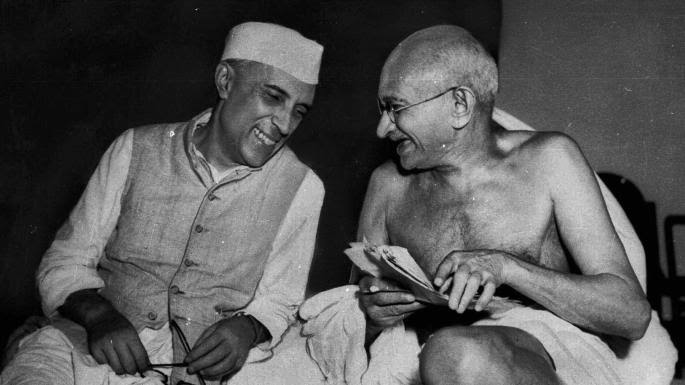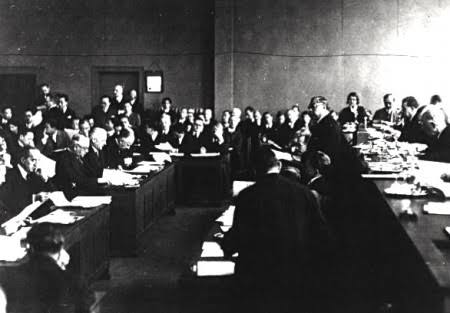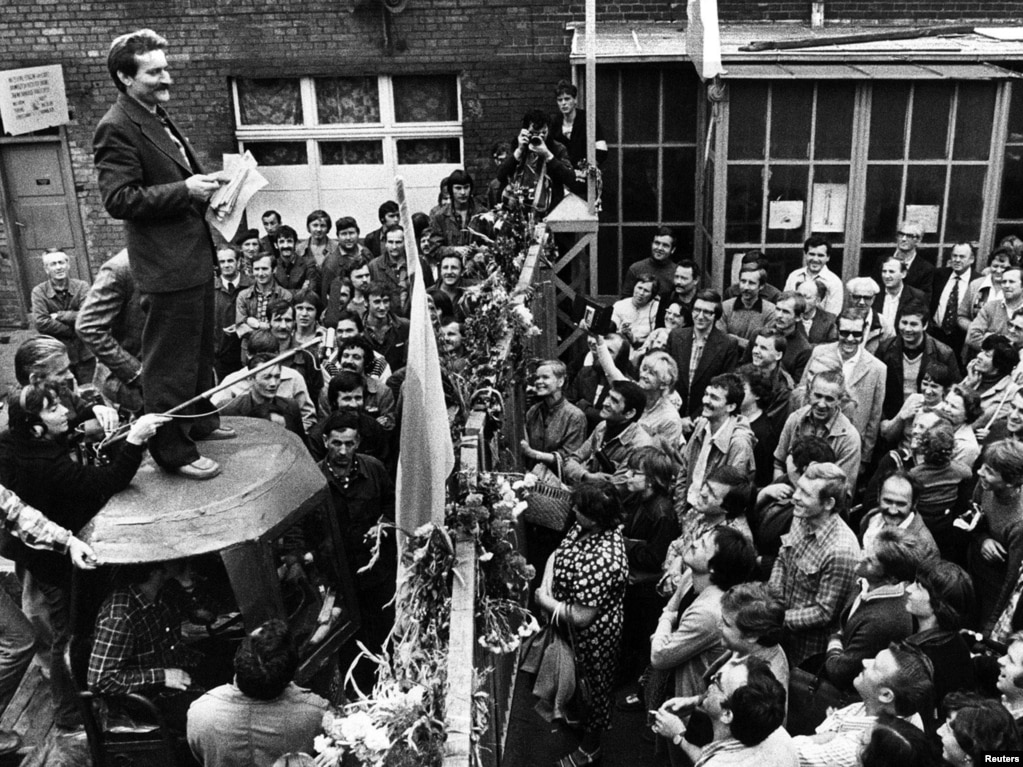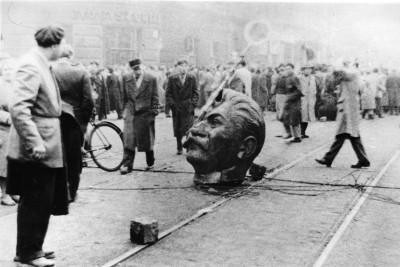You are using an out of date browser. It may not display this or other websites correctly.
You should upgrade or use an alternative browser.
You should upgrade or use an alternative browser.
Photos of the Kaiserreich
- Thread starter pattontank12
- Start date

Matthew Fox as General Bonner Fellers in the 2009 movie Division

A still featuring Tommy Lee Jones as President-General MacArthur as he arrives in St Louis in the movie Division
The movie was both praised and torn apart in equal measure. It was seen as a triumph of film with the cinematography and score seemingly destined to go down in film history as some of the best the medium has to offer. All the actors were praised for their performances and the movie won Goodman, Lewis and Hanks their third Oscar and Fox his first. The movie itself was showered with awards and became the 3rd highest grossing movie of the decade behind Avatar: The Last Airbender and Transformers. However the movie was also taken down a few notches for playing fast and loose with historical accuracy. Firstly Fellers never was in St Louis, he was stationed on the Rockies Front during the Battle of St Louis as a Lt General, only being promoted to General in 1948, two years after the Trials. Also he never had a Syndicalist love interest in St Louis who he accidentally ordered the execution of, in fact the reported 100 executed Syndies incident never happened. All prisoners from St Louis were sent to POW camps in Montana and Wyoming for the duration of the War. It was also pointed out that the trials did not take place in 1945 but 1946 as Long and Reed were still on the run. Finally many people took issue with the movie pinning the blame for the post-war terrorism on MacArthur. Historians and Psychologists who studied the post-war era have all pointed to a number of different reasons for the Resistance and while a few of those reasons did have a root cause in MacArthur or his actions, none of them can entirely be laid at MacArthur's feet. [...]
What about in a scenario where the USA stays authoritarian under MacArthur but re-democratises after MacArthur dies in 1964 with the younger generation having grown up with the USA and PSA being separate nations? Is a scenario where the USA quietly drops claims to the PSA in exchange for the PSA renouncing their claim to be the legitimate government (and renaming themselves something like the Federal Republic of Pacifica) possible?If the USA re-democratises, I can imagine some sort of reunification talks taking place, with the former PSA territories becoming a sort of 'autonomous territory' within the Union with it's own economy, congress, and defence force.
If the USA stays authoritarian under a military junta, however, I think that just like you have suggested, it will be a PRC/RoC, or perhaps ROK/DPRK situation. Since even if they agree upon a ceasefire, they do not officially recognise each other, sort of like how both North and South Korea claims legitimacy as the sole government of the Korean peninsula.
They can still be the PSA if the A meant the continent. Either way we can get Cyberpunk Los Angeles by 2019.What about in a scenario where the USA stays authoritarian under MacArthur but re-democratises after MacArthur dies in 1964 with the younger generation having grown up with the USA and PSA being separate nations? Is a scenario where the USA quietly drops claims to the PSA in exchange for the PSA renouncing their claim to be the legitimate government (and renaming themselves something like the Federal Republic of Pacifica) possible?
The Avatar thing was both a wish fufillment thing for me (there is no ATLA movie, hush) and also to poke fun at the blue person Avatar. While its Cameron and not Spielberg, having a different Avatar be on top gives me a light chuckleNow I know you're pulling my leg.
The Transformers movies do great overseas, especially (at least lately) in China. That is where I see it getting its title ITTL
Wolverines from the film, "white dawn." The premise was in the 80s an invasion of the CSA of the Russian State with local students resisting it.
A remake was made, originally planned to be against Natpop China. However it was decided against in favor of the Chinese audience, so the Korean Empire became the new
invading force, much to the ire of true fans.
Note: This isn't complete parrelism, as the Korean Empire has the state unified and isn't as totalitarian as OTL North Korea, while a complete natpop dictatorship. However unlike Natpop China, it hasn't embraced reforms.
Non-existant if they get censored by a dictatorship US because of their syndicalist propaganda.What would the Marvel Cinematic Universe be like in KR?
Depends on who wins the US Civil War. Most of the main comic book publishers in 1940 onwards were based in New York, but that means little given the lore. It should be noted that many of the early writers and artist were very left-wing, while the publishers weren't. So early Superman, Batman, and Wonder Woman were very very left-wing for their day (Superman and Wonder Woman especially) but got toned down when they became more controlled by their publishers. Other comics, such as Spider-Man and such would be radically altered, and certain characters like Captain America might not even exist.What would the Marvel Cinematic Universe be like in KR?
Depends on who wins the US Civil War. Most of the main comic book publishers in 1940 onwards were based in New York, but that means little given the lore. It should be noted that many of the early writers and artist were very left-wing, while the publishers weren't. So early Superman, Batman, and Wonder Woman were very very left-wing for their day (Superman and Wonder Woman especially) but got toned down when they became more controlled by their publishers. Other comics, such as Spider-Man and such would be radically altered, and certain characters like Captain America might not even exist.
Honestly, considering the utter disruption the US civil war would bring, the industry as we know it is unlikely to exist. With New York being a major theater of the war, much of the classic comic book companies such as Detective Comics or Marvel (while being left leaning as you rightfully pointed out) are likely butterflied by the Super Depression and the swathes of fighting. DC likely never launches Superman (who came in 38) due to the war and Superman is largely credited with being the start of the "Golden Age" of masked heroes with secret identities.
Due to the timing of the SACW the whole comic industry would be heavily stunted and likely emerge in a completely different form and at a different time (maybe in a different place too).
Interestingly however, perhaps you see superheroes emerge elsewhere, maybe in Japan? Japan at the time had a an early super hero called "Golden Bat" (named after a brand of cigarettes) and Prince Gamma (see pic below), and pulp fiction publication was popular. Depending on the path Japan takes politically, you might have more time for the industry to build up there, completely independent of the West.
Alternately perhaps you have creatives fleeing to Canada or New England Republic, perhaps you see exiled British writers rubbing shoulders with comic writers from OTL, which would likely produce entirely original characters, settings, themes etc. Perhaps even pulp comics emerge instead in California with the PSA (Zoro, Texas rangers etc) and heroes take on a different image there.

Last edited:
Deleted member 107125
The Bharatiya Commune: Part One (1937-1940)

Lala Lajpat Rai (1865-1941), Chairman of The Bharatiya Commune (1925-1937)
In 1936, Lala Lajpat Rai, the much-loved Chairman of the Bharatiya Commune, announced his intent to resign due to his age. What followed was a struggle between three parties- Mohandas Gandhi’s Agrarians, A.K Fazlul Haq’s Moderates, and Subhash Chandra Bose’s Totalists.

Mohandas Gandhi and Jawaharlal Nehru
In 1937, Rai would officially resign as chairman. An election of the next leader of the Indian National Congress followed shortly after, with no clear victory.
Huq’s causes were spearheaded by the young Jawaharlal Nehru, who aimed to build industries. Gandhi wanted the nation to focus on agriculture. Yet the two would find themselves in a coalition, establishing a new government.

Indian Delegates at the First Internationale Congress
Meanwhile, in other news, the Commune seeks better relations with the Third Internationale. France has even guaranteed them military help!

Meanwhile, the Totalists began to cry foul, and began to spearhead the cause of revolution in rural areas.
With a divided government, a weak army, and rivalries with two other nations, will the Commune survive? Read more to find out...

Lala Lajpat Rai (1865-1941), Chairman of The Bharatiya Commune (1925-1937)
In 1936, Lala Lajpat Rai, the much-loved Chairman of the Bharatiya Commune, announced his intent to resign due to his age. What followed was a struggle between three parties- Mohandas Gandhi’s Agrarians, A.K Fazlul Haq’s Moderates, and Subhash Chandra Bose’s Totalists.
Mohandas Gandhi and Jawaharlal Nehru
In 1937, Rai would officially resign as chairman. An election of the next leader of the Indian National Congress followed shortly after, with no clear victory.
Huq’s causes were spearheaded by the young Jawaharlal Nehru, who aimed to build industries. Gandhi wanted the nation to focus on agriculture. Yet the two would find themselves in a coalition, establishing a new government.
Indian Delegates at the First Internationale Congress
Meanwhile, in other news, the Commune seeks better relations with the Third Internationale. France has even guaranteed them military help!

Meanwhile, the Totalists began to cry foul, and began to spearhead the cause of revolution in rural areas.
With a divided government, a weak army, and rivalries with two other nations, will the Commune survive? Read more to find out...
Last edited by a moderator:
Is said Korea organized under the principles of Ilminism?This isn't complete parrelism, as the Korean Empire has the state unified and isn't as totalitarian as OTL North Korea, while a complete natpop dictatorship.
Protest against the Union
A strike that began in the Phillip Snowden memorial Shipyard, was the beginning of the end for British Syndicalism.
Here protest leader Leonard Wallace, addresses the disgruntled shipyard workers. They would later form the first trade union not affiliated with the TUC, "Solidarity".

A strike that began in the Phillip Snowden memorial Shipyard, was the beginning of the end for British Syndicalism.
Here protest leader Leonard Wallace, addresses the disgruntled shipyard workers. They would later form the first trade union not affiliated with the TUC, "Solidarity".

The 1956 Irish Uprising

After the second Weltkrieg, Ireland was made into a satellite state of the Union of Britain. Food shortages, brutality of the secret police, and heavily ingrained memories of British imperialism, all lead to the 56 uprising. The most famous event of the Uprising where Rebels tearing down a statue of Oswald Mosley, which in of itself became a symbol.

After the second Weltkrieg, Ireland was made into a satellite state of the Union of Britain. Food shortages, brutality of the secret police, and heavily ingrained memories of British imperialism, all lead to the 56 uprising. The most famous event of the Uprising where Rebels tearing down a statue of Oswald Mosley, which in of itself became a symbol.
Deleted member 82792
What kind of uniforms and vehicles would they have in the Second American Civil War?
I don't know what vehicles they'll have but uniform wise i made a post sometime last year describing it goes like thisWhat kind of uniforms and vehicles would they have in the Second American Civil War?
USA=same as the OTL USA in WW2
AUS= it's military would be wearing a combination of Austrian, German, and Russian uniforms while the militas (minutemen and silver shirts as ex) would be wearing US army uniforms from the Spanish-American war but with a greyish color in homage to the Confederates of the 1st Civil War
CSA= same as the US in WW1 but with the Ardian helmet while the militas (Red Guards mainly) would be wearing civilian clothing like the anarchists in the OTL Spanish Civil War
PSA=a weird mix of Canadian and Japanese uniforms
New England=whatever the Canadians have
Share:

